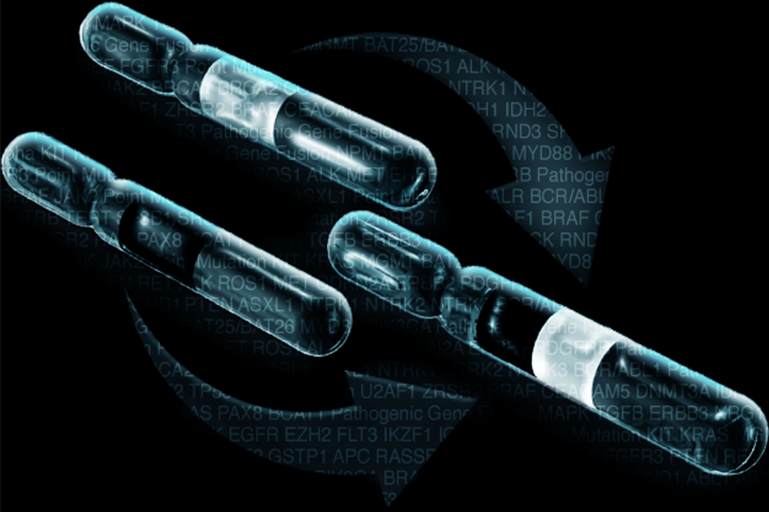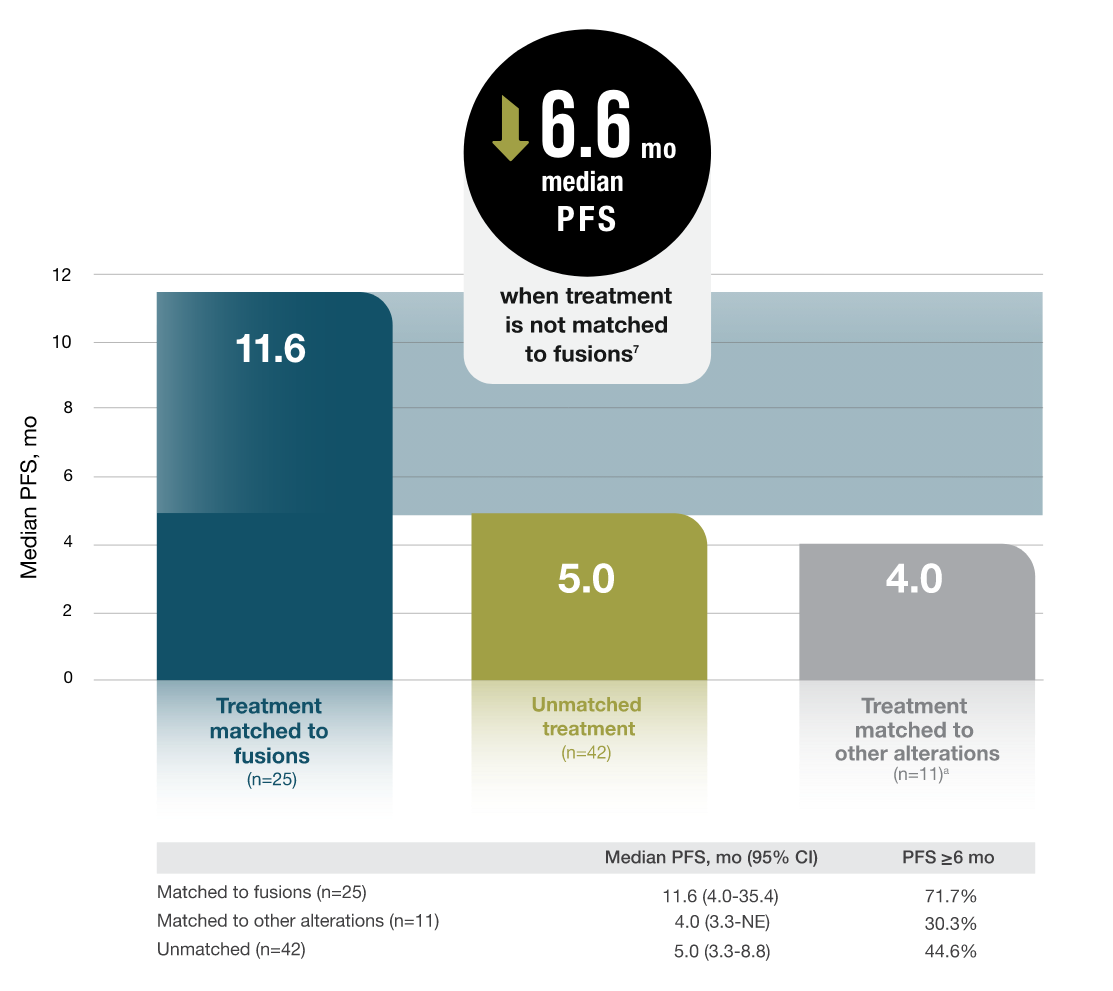Stay Informed


The clinical consequences of pathogenic gene fusions
Pathogenic gene fusions are a contributing factor in 1 in 6 cancers1
Among 9624 patients who had their tumors genetically-tested with RNA-based sequencing, pathogenic gene fusions were found in 16.5% of samples.1
Why should I be concerned about pathogenic gene fusions?
- Fusions can occur across tumor types and account for approximately 20% of cancer morbidity2-4
- A higher number of gene fusions is an independent prognostic factor for poor outcomes in lung cancer regardless of age, sex, tumor tissue type, smoking status, and cancer stage (I-IV)5,6

In an analysis of 79 patients with identified gene fusions, poorer outcomes were observed in patients with pathogenic gene fusions who were not matched to an FDA-approved fusion-targeted therapy.7
NRG1: a dangerous fusion
Get to know NRG1

NE, not estimable; NRG1, neuregulin 1; PFS, progression-free survival.
aTwelve of the 79 patients received treatment matched to other alterations, but one patient in the matched group had an unclear match and was excluded from the pair-wise comparison analysis.7
References: 1. Gao Q, Liang W-W, Foltz SM, et al. Driver fusions and their implications in the development and treatment of human cancers. Cell Rep. 2018;23(1):227-238.e3. doi:10.1016/j.celrep.2018.03.050 2. Latysheva NS, Babu MM. Discovering and understanding oncogenic gene fusions through data intensive computational approaches. Nucleic Acids Res. 2016;44(10):4487-4503. doi:10.1093/nar/gkw282 3. Heyer EE, Deveson IW, Wooi D, et al. Diagnosis of fusion genes using targeted RNA sequencing. Nat Commun. 2019;10(1):1388. doi:10.1038/s41467-019-09374-9 4. Liu SV. Plain language summary of NRG1 fusions in cancer: current knowledge and treatment with afatinib and other drugs. Future Oncol. 2022;18(26):2865-2870. doi:10.2217/fon-2022-0073 5. Dhanasekaran SM, Balbin OA, Chen G, et al. Transcriptome meta-analysis of lung cancer reveals recurrent aberrations in NRG1 and Hippo pathway genes. Nat Commun. 2014;5:5893. doi:10.1038/ncomms6893 6. Shin DH, Lee D, Hong DW, et al. Oncogenic function and clinical implications of SLC3A2-NRG1 fusion in invasive mucinous adenocarcinoma of the lung. Oncotarget. 2016;7(43):69450-69465. doi:10.18632/oncotarget.11913 7. Nikanjam M, Okamura R, Barkauskas DA, Kurzrock R. Targeting fusions for improved outcomes in oncology treatment. Cancer. 2020;126(6):1315-1321. doi:10.1002/cncr.32649
